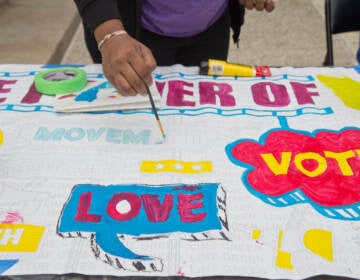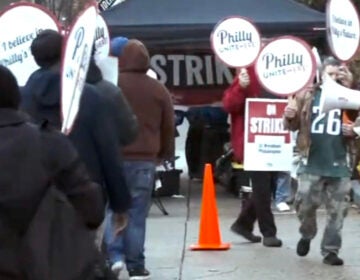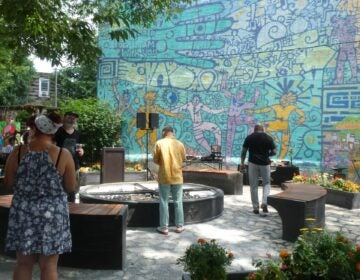Philly Holocaust memorial will update itself with a new mural
The Holocaust Plaza in Center City has the oldest Holocaust memorial sculpture in America. Now it is commissioning the largest mural.
Listen 1:15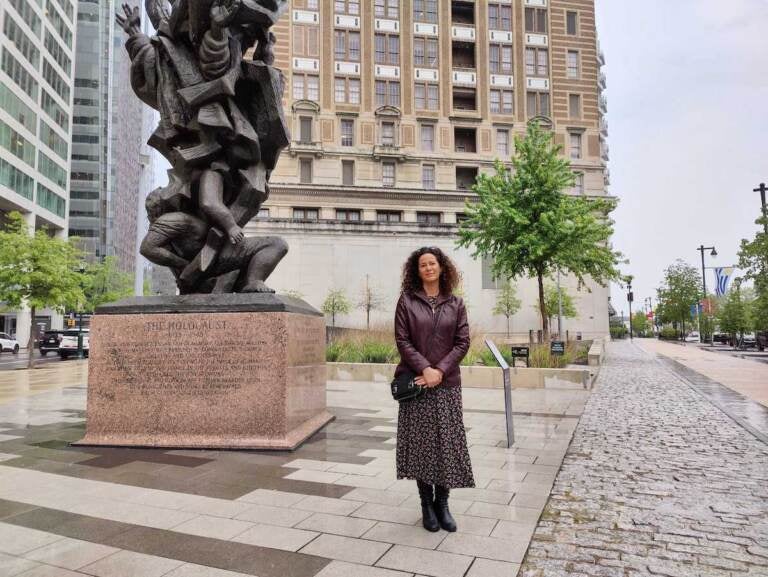
Eszter Kutas, executive director of the Philadelphia Holocaust Memorial Foundation, stands in the Horwitz-Wasserman Holocaust Memorial Plaza, at the triangle of 16th Street, Arch Street, and the Parkway. (Peter Crimmins/WHYY)
Philadelphia’s Horwitz-Wasserman Holocaust Memorial Plaza — inside the triangle of 16th Street, Arch Street, and Benjamin Franklin Parkway in Center City — got a major upgrade just five years ago with new pavers, landscaping, and panels engraved with text that contrast the ideals of American democracy with Nazism.
Now the Philadelphia Holocaust Remembrance Foundation is planning to upgrade the plaza again with a new mural. On Tuesday, the organization will officially launch an open call for an artist who can design a 2,000-square-foot image for the wall overlooking the space.
“It will be the first mural on the Parkway,” said Executive Director Eszter Kutas. “And it will be also the only large-scale, publicly-commissioned Holocaust mural in the country.”
The PHRF and Mural Arts Philadelphia are asking artists to submit letters of interest for the mural, with plans to make its selection this fall. Kutas hopes to have the mural completed in late 2024.
“We have created our own goal statement with what this mural should be about, and those are hope, resilience, tolerance, and unity,” she said. “Nobody should be expecting disturbing images about the Holocaust on this wall. We understand that we are in a public space and that we need to be careful.”
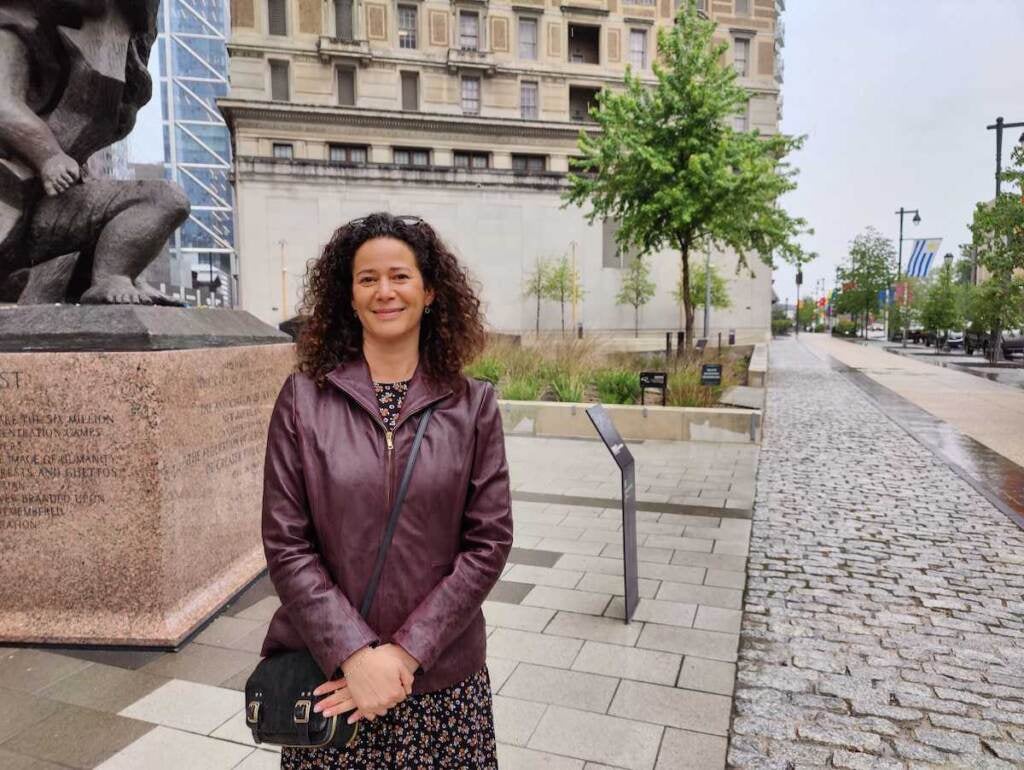
The plaza already has a memorial sculpture, “Six Million Jewish Martyrs” (1964), by sculptor Nathan Rapoport. It is the oldest American memorial to the Holocaust of World War II, and was commissioned by and for survivors of the Holocaust.
Six decades later, the number of people alive who personally experienced the Holocaust is approaching zero, so PHRF feels a new memorial mural must be more contemporary.
“Every memorial wants to believe that it lives in perpetuity, but that’s just not the case,” said James Young, a professor at the University of Massachusetts who specializes in Holocaust remembrance.
“There’s nothing more invisible than a memorial once people get used to it. It becomes a very inanimate part of the landscape. It’s kind of buried behind the bushes,” he said. “The memorial sites that build into themselves the ability to accommodate another generation’s memory and their own reasons for coming to it, are the memorials that really live on.”
Young will be in Philadelphia on Tuesday at an event at the Friends Select School to launch the mural design process. He will be interviewed on stage by WHYY’s Marty Moss-Coane about the evolving role of memorials in how tragedy is remembered.
As the founding director of the Institute for Holocaust, Genocide, and Memory Studies at UMass, Young been part of many major memorial projects: including the 9/11 memorial in New York, the Berlin Memorial to the Murdered Jews of Europe, the memorial in Norway for the 2011 mass shooting that killed 77 people, and a memorial project for the 2017 shooting in Las Vegas that killed 60 people and injured 413.
He says the way Philadelphia is updating its Holocaust memorial is unique.
“There’s a lot of conserving of old Holocaust memorials, both to conserve and preserve the memory and their intentions at the time they were built,” he said. “That just makes no sense to a new generation, which would be remembering the Holocaust for different reasons.”
The mural at the Holocaust Memorial will be on a very prominent wall in the middle of the city seen by the millions of people — both locals and tourists — who move along the Parkway between LOVE Park and the Philadelphia Museum of Art.
Kutas said the winning mural design will not only need to consider the public’s relationship to the Holocaust — which studies show is becoming less familiar to younger people — but also the physical environment in which it will be seen.
One of the challenging aspects of the space is the trees: The mural wall is behind about a dozen trees deliberately placed as part of the plaza’s redesign. A central silver maple, about 30 feet tall, was grown from a sapling taken from a tree in Theresienstadt, the Jewish ghetto built by the Nazis as part of its network of concentration camps.
Children in Theresienstadt planted a tree while imprisoned in the ghetto, which they cared for despite their own meager resources as wards of the Nazis. None of them survived. The tree they planted has descendants in several cities around the world, including Philadelphia.
Kutas said the tree is one of the elements in the memorial plaza that resonates strongly with younger visitors.
“It’s actually one of those things that students relate to the most,” she said. “They can really relate to that effort.”

Get daily updates from WHYY News!
WHYY is your source for fact-based, in-depth journalism and information. As a nonprofit organization, we rely on financial support from readers like you. Please give today.



